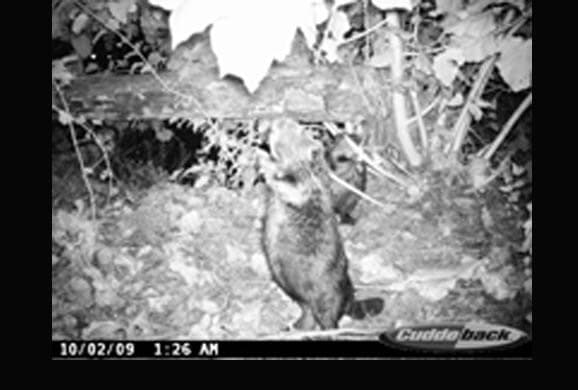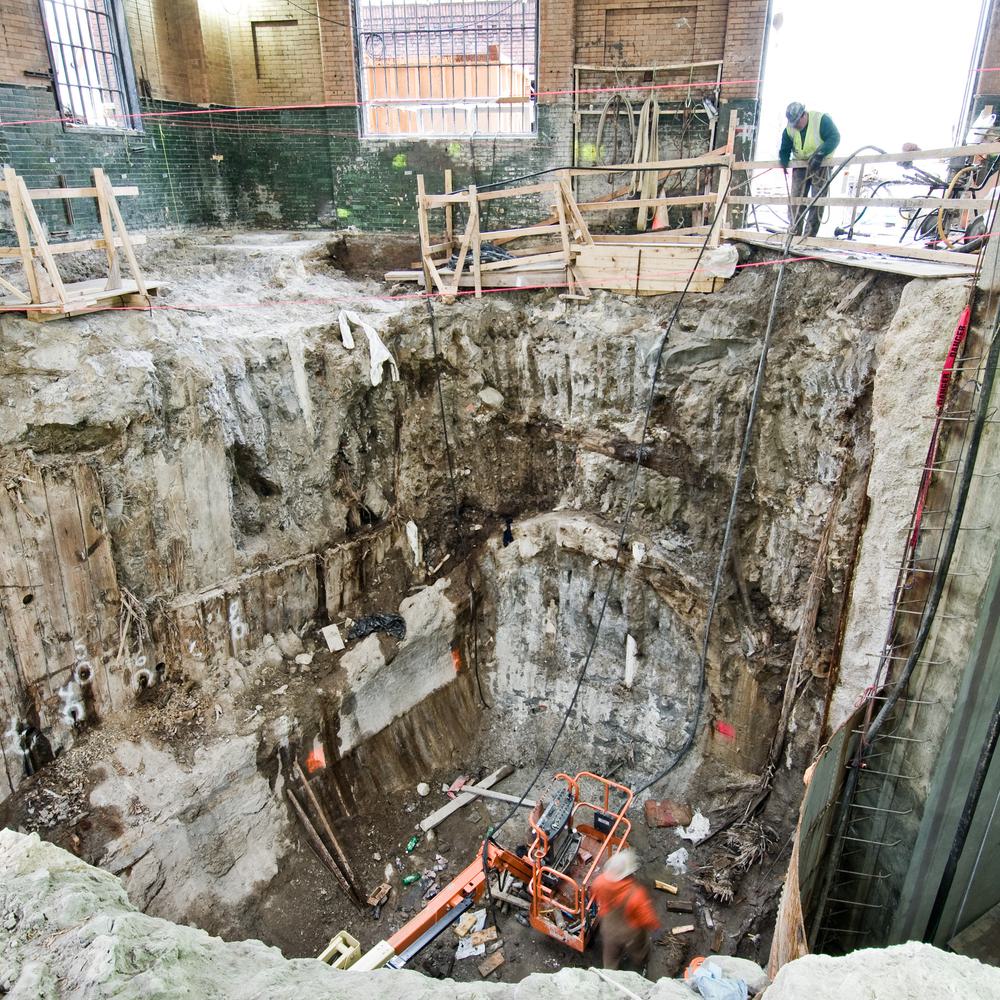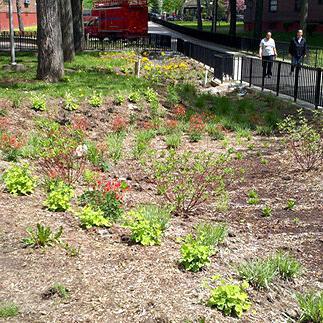Why did the Beaver Pick Conner Creek for its Detroit River Debut?
Last Modified Jul 06, 2022

A cozy, fenced-in site at DTE Energy’s Conner Creek Power Plant provides a safe haven for a pair of beavers that returned to the area with their young last spring. Spotted by a DTE Energy employee and captured on videotape, the beavers were big news since they disappeared 75 years ago after being overhunted. While the reason the beavers returned may never be known, a closer look at the area they are calling home reveals why this site has become so attractive. Over the past four years, the natural habitat has flourished in this part of the Detroit River, near the eastern tip of Belle Isle, providing a more desirable environment for wildlife in an urban area.
Located along the Detroit River and Conner Creek, the 240-megawatt, natural gas-fired power plant operates in the summer during periods of high demand for electricity. Human activity around the 66-acre site is fairly limited. There are four access points to water throughout the site: Conner Creek, the Detroit River, Detroit River marina canal and another access canal. Upstream water quality improvements by the Detroit Water and Sewerage Department (DWSD) and upland habitat improvements by DTE Energy have created an environment where beavers, ring-neck pheasants, red fox, coyote and white tail deer can co-exist within an urban area. These projects have helped heal past negative impacts of urbanization.
Eliminating Untreated Sewage Overflows Improves Water Quality to Support Wildlife
Conner Creek is a 4,000-foot channel connected to the Detroit River. Originally, it was an open waterway or drain that crossed the east side of Detroit providing drainage to the Detroit River. As development occurred in the City, the entire drain was enclosed as an underground pipe except for the portion discharging to the river. For decades, the primary flow into the creek had been the periodic discharge of combined sewage during rain events when the City’s combined sewer system became overloaded. That changed in November of 2005 when the Conner Creek Combined Sewer Overflow (CSO) Control Facility went into operation – treated effluent instead of combined sewage is now discharged into the creek and the Detroit River.
Related Topics:
The change in Conner Creek is amazing. Prior to 2006, the water was brown, trash floated freely, and bubbles popped on the surface as organic matter below decayed. During warm weather, odors were prevalent. Only pollutant-tolerant fish could survive in the stagnant environment.
Today, the water is blue, reflecting the Conner Creek CSO Facility’s image off its surface on a sunny day. Residents don’t complain about the odor anymore. Bayview Yacht Club has noticed a dramatic improvement and constructed 30 new slips on three piers in Conner Creek. Wildlife is active at the power plant next door.
According to Terry Moore, DWSD CSO Supervisor, the Conner Creek CSO Facility operates about 40 times a year and discharges treated effluent during about 25 of those rain events. “For the smaller storms, we store rather than treat the combined sewage and send it to the wastewater treatment plant once capacity is available in the sewer system. For those roughly 25 times a year when the sewers become overloaded beyond our 30 million gallon storage capacity, the facility captures flow and uses a three-step treatment process to remove Biological Oxygen Demand, ammonia, phosphorus, bacteria, oil and grease. The process includes screening, settling and disinfection.”
Moore said disinfection is the most challenging part of the treatment process. “We have to calculate the amount of disinfectant to use for each storm to achieve proper bacteria kill while minimizing the amount of residual chlorine in discharges from our facilities. No two storms are alike. For instance, storms that occur in late summer, when it hasn’t rained for awhile, have the most pollutants. During large storms, after prolonged dry periods, those pollutants are flushed from the system into our facilities for treatment. In the winter, pollutants from cars, people and animals have had plenty of time to accumulate on hard surfaces and grass. All those pollutants get flushed into the sewers when it rains.”
Any flow discharged from the facility has to meet permit conditions outlined by the Michigan Department of Natural Resources and Environment. One of those conditions is a limitation on the amount of fecal coliform which can be released. Fecal coliform is the family of bacteria that includes e.Coli that is responsible for beach closings. The Conner Creek CSO Facility routinely achieves fecal coliform levels below the standard for public health. For instance, from March 7 to March 13 of 2009, the area experienced multiple rain storms requiring the facility to remain in operation for 5 days. A total of 884 million gallons were treated in the facility and discharged to Conner Creek and the Detroit River. The geometric mean for fecal coliform on discharged effluent during this time was 109 counts per 100 milliliters, well below the strictest limit imposed in the summer of 400 counts per 100 milliliters.
The Conner Creek CSO Facility’s exemplary treatment results are due to the skilled performance of the staff using their state-of-the-art equipment. Quick response, sound judgment, intuition, an understanding of weather patterns and staying prepared are critical aspects to treating each new storm that comes down the pipe. A staff of four is needed to monitor the facility once it automatically kicks into operation during a heavy storm event. Two operators work 12-hour shifts until the storm subsides and flows stored in the facility are sent back to the sewer system. Operators monitor and sample the flow coming in, monitor and adjust the disinfection process, analyze samples, troubleshoot equipment, monitor communications with the wastewater treatment plant, and perform all reporting and notification tasks.
CSOs are overflows that occur during rain storms from overloaded sewers that transport sanitary sewage and storm water in a single pipe, an early engineering practice that was used when the density of development was much lower. CSOs are easy to criticize as a practice that must be halted immediately, but it is a complex issue that can’t be solved with the snap of a finger. Cities throughout the country are working on this problem. DWSD has been actively working on controlling CSOs since it started development of its long term control plan in 1993. Since that time, DWSD has spent $1.6 billion on CSO efforts including 8 CSO control facilities that are currently operational. Detroit is proposing to spend another $814 million on new CSO control projects over the next 25 years. Many other utilities facing CSO problems are in earlier stages of their programs and have visited DWSD’s facilities as research for their own program development. The Louisville Municipal Sewer District visited three of Detroit’s facilities this past January including the Conner Creek CSO Facility.
Attracting Wildlife to a Utility Plant
Habitat improvements undertaken by DTE Energy’s Conners Creek Power Plant Green Team over the last two years have attracted wildlife to this migratory flyway site and paved the way for certification by the Wildlife Habitat Council (WHC). The plant is one of 26 DTE Energy facilities that are certified by WHC, a nonprofit organization dedicated to assisting corporate and other landowners protect and enhance wildlife habitat. DTE Energy’s involvement with WHC demonstrates a strong commitment to create an environment where wildlife and power generation co-exist.
The Green Team is made up of DTE Energy employees, retirees, family members and friends who volunteer their time to work on environmental projects on company property and in the communities served by the company. The Green Team actively manages habitat on two acres of the property; an additional 25 to 30 acres is left undisturbed for wildlife use. The Green Team planted an entrance garden, creating habitat for birds and pollinators while also adding to the beautification of the site in July of 2008. The fall after the garden was completed, beaver clues were found.
Jason Cousino, a safety specialist at the River Rouge Plant who also serves as a DTE Energy Wildlife Coordinator, thought someone was playing a joke on him when he first heard of the beaver. “I thought the shift supervisor saw a muskrat or groundhog. I just chuckled when he told me about it. Then, when I was conducting an assessment of the habitat, I saw chewed branches. It wasn’t until we caught the beaver on tape in November that I believed it existed.”
The site conditions were ideal for the beaver – clean water, trees and seclusion. Beavers are monogamous and nocturnal, living in family groups. The young stay with their parents for two years and then leave to make a home of their own. When two young beavers reappeared on camera in the spring of 2009, it gave the Green Team hope the beavers might be serious about sticking around. The Green Team undertook another project near where the beaver came up on land. Working with 12 Detroit high school students, they enhanced the migratory bird habitat along the Detroit River. Asphalt remnants of an old road were removed and native vegetation was planted along the Detroit River marina canal. The Green Team plans to continue monitoring for the presence of beavers through direct observation and camera recordings. Native trees will also be planted and maintained for beaver habitat in the future.
Looking at other opportunities, DTE Energy has partnered with the US Geological Survey on a Tree Swallow monitoring project at the site. Because the Tree Swallow’s diet consists primarily of aquatic insects, their eggs can be tested to quantify the level of contaminants in sediment. Twenty nesting boxes have been placed on the power plant site along the Detroit River as part of a national study to assess contaminant exposures and possible effects on birds nesting along the Great Lakes. The hope is that the boxes will attract a nesting population that will provide multiple years of data. Cousino said, “We have seen more wildlife as we have been actively on the site monitoring and improving the habitat. I saw a large bird that looked like an osprey and didn’t think someone was playing a joke on me!” Plans are underway to convert an old light tower into a nest platform. Osprey began returning to the area in 2002 – another sign that things really are changing along the Detroit River.
Learn more about Operation Clean Water.








